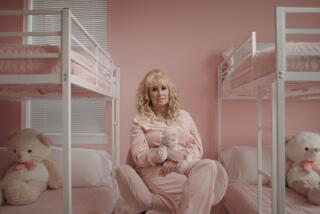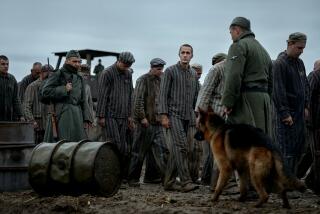Movie review: ‘The Last Lions’
After 22 movies done over 28 years, there’s nothing the team of Dereck and Beverly Joubert don’t know about filming the king of the jungle, so it goes without saying that their latest effort, “The Last Lions,” is mightily impressive to look at. What it’s like to listen to is somewhat different.
Major forces in wildlife conservation, the Jouberts are so revered that Disney animators saw one of their films to get in the mood for creating “The Lion King.” The couple have lived for the last seven years on Duba Island in Botswana’s Okavango Delta, the location where their latest documentary feature takes place.
That proximity means that “The Last Lions” is filled with spectacular animal photography, compelling footage of these beasts moving proudly in their world. We see them fighting each other, fighting off packs of hyenas, and taking part in epic showdowns with herds of massive buffalos. These are truly remarkable visuals, inspired in part by the Jouberts’ understandable concern for a species that has dwindled from 450,000 half a century ago to 20,000 today.
That dwindling is one of the themes of “The Last Lions,” which follows a lone lioness named Ma di Tau (Mother of Lions) as she tries to stay alive and protect her three cubs from a variety of threats from several species, including her own. This is not a sugar-coated world, far from it, with animals, including ones we have become attached to, coming to a variety of somber ends.
All those years of filming have given the Jouberts a ringside seat on the lives of the lions they’ve observed, but the effort of squeezing all that footage into an 88-minute film that nominally covers roughly a year’s time has had its consequences.
For one thing, there is, as may be inevitable in nature films, a certain amount of anthropomorphizing going on here, a determination to give human characterizations to animals who may or may not have them. This starts with naming the protagonist Ma di Tau and making believe the lioness knows that’s what she’s called. It extends to engaging in animal mind-reading, telling us what this or that beast is thinking or feeling at a given moment. Because of their great experience, the Jouberts’ guesses are more than plausible, but finally guesses are all they can be.
This situation is not helped by a voice-over narration read by Jeremy Irons in his plumiest tones that is so highly dramatized that the on-screen credit reads “as told by” instead of the more pedestrian “narrator.”
“Tonight, the bush is uneasy,” Irons says early on to set the scene, one that will include lines like “the silence is a condemnation,” “she is a fugitive in her own land” and “the pride sense something in the look in her eye.” It may all be true, but it can be a bit hard to take.
Finally, though, it is quite likely that none of these problems matters at all. No one, with the possible exception of the narrator’s family, goes to a nature film to listen to the voice-over, and these animals are so magnificent on screen that nothing anybody says makes much of a difference.
More to Read
The biggest entertainment stories
Get our big stories about Hollywood, film, television, music, arts, culture and more right in your inbox as soon as they publish.
You may occasionally receive promotional content from the Los Angeles Times.











